Making a stool from green ash at the Sylva Wood Centre
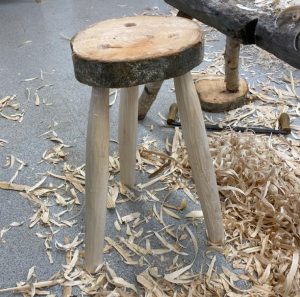
I learnt 10 lessons in making my greenwood stool:
1. It's hard work using an axe to reduce a triangular piece of wood into a cylinder but less hard work than using a draw knife to reduce the timber down to size. With both tools, axes and draw knives, you soon learn to work with the grain and how to make the tools work for you.
2. Using a drawknife is extremely satisfying but it's "the wrist action" that matters - to avoid the blade digging into the wood. Because you have a hand on each end of the drawknife you can't easily injure yourself, but this didn't stop one of my course-mates from digging the corner into her leg. This created a small nick that justified getting out the first aid kit.
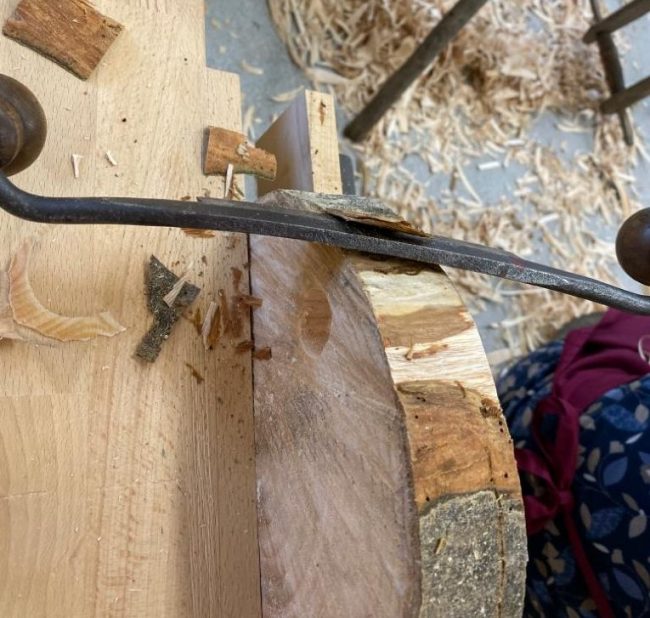
3. There is a new tool that I'd never come across before called a "travisher" that's a small, tough plane for stopping the end grain feeling rough - so it's very necessary for smoothing the top of the seat. I took a while to learn how to cut efficiently with smooth strokes.
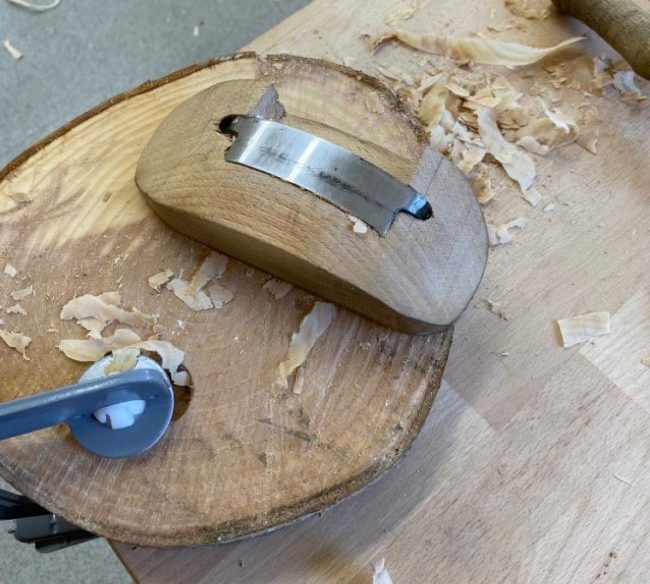
4. Peter Wood, our tutor, is an very clear teacher and runs courses in Oxfordshire and in Leicestershire. He organises one- and two-day courses on coracle making, basketry, paddle-making and week-long courses to create a Windsor chair.
5. Whilst some projects are male- or female-dominated, stool making appeals to all genders and ages - our stool-making group was fairly evenly balanced, whilst women dominate basket work and men dominate paddle-making.
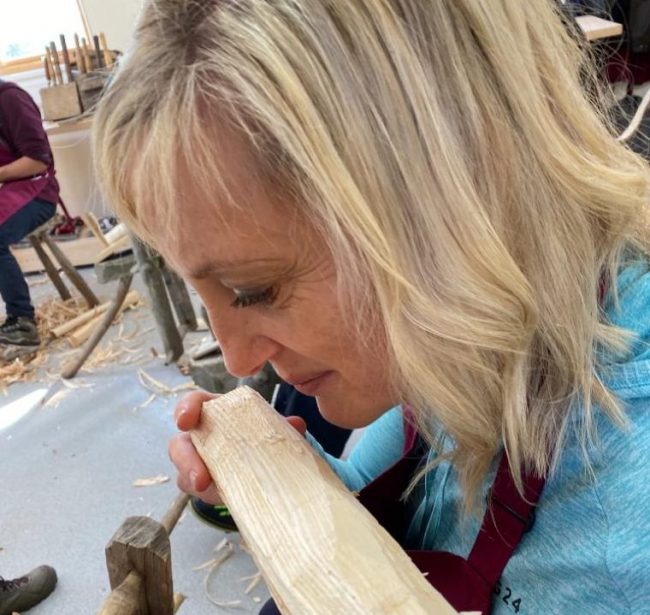
6. It's critical to be careful with timber selection and the first splitting of the ash logs into pieces for making the legs - avoiding knots and going with knowing how the wood will "want" to split are tricks worth knowing.
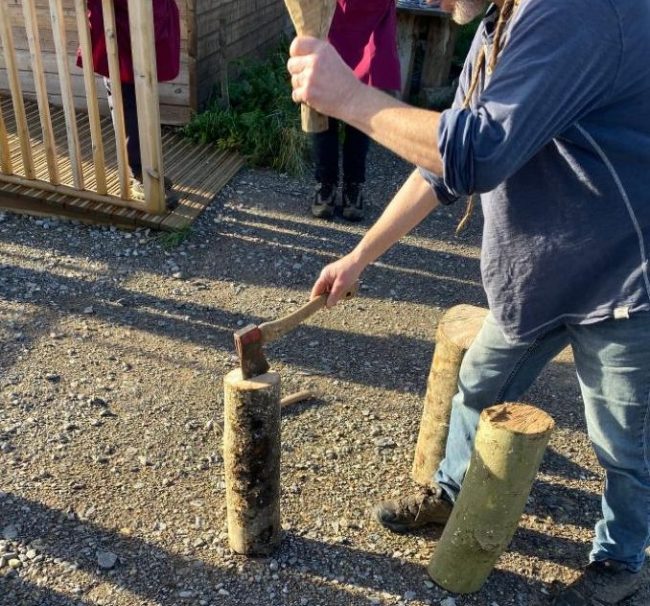
7. With three legs no stool will rock (basic geometry - you can always make a flat plane from three points) , BUT it can be slopey. We used a spirit level and some wedges to mark the legs so that, once cut, the seats of our stools were level.
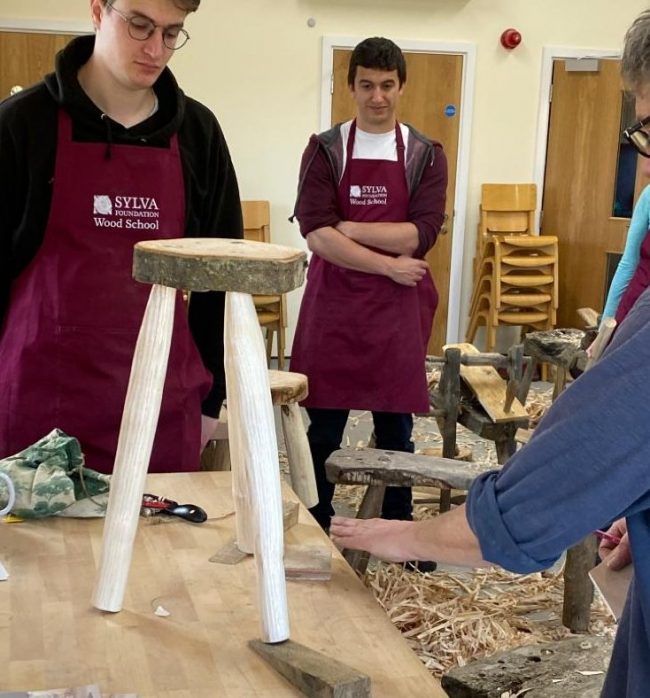
8. No two stools are identical - our group of seven created seven different, but functional, 'works of art'. Some made tall stools, some did squat ones, and some stripped off the bark while others left it on, but everyone left with a useable three-legged seat.
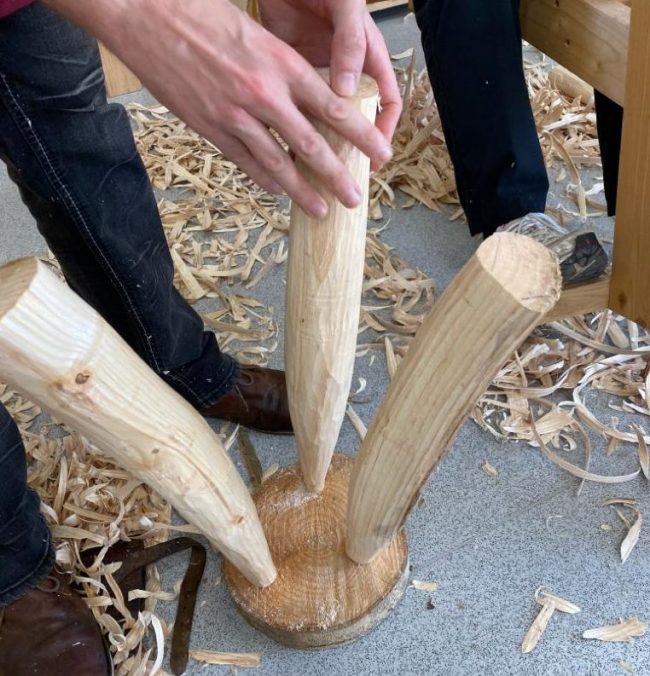
9. Green ash wood is lovely to work with - smells good, splits well, very workable and forgiving. It is also very readily available in all parts of the UK.
10. As with all such projects it gives a chance to escape from screens and daily pressure - it's just you the wood, the wood and fellow trainees, helped by the tutor. At the end of our day, Gabriel Hemery, director of the Sylva Foundation, came along to offer encouragement - he and his team have built something very special in Oxfordshire. My more tranquil state of mind and owning something I created with my own hands are both advocates for The Sylva Wood Centre.
Comments are closed for this post.
